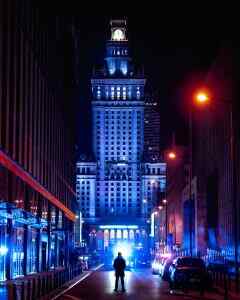Interior Layout Masterclass: Crafting Visually Appealing Books
Introduction: Embarking on a Visual Odyssey
Welcome to the realm of interior layout, where the art of crafting visually captivating books unfolds. In this comprehensive guide, we embark on a journey to elevate your book’s aesthetic appeal, leaving an unforgettable impression on readers. As we delve into the intricacies of interior layout, you’ll discover the secrets to creating books that not only convey words but also ignite imaginations.
Chapter 1: The Anatomy of an Interior Layout
Every book’s interior layout is a symphony of elements, each contributing to the overall visual experience. Let’s dissect the key components:
Margins and Gutters: The Framework of Space
Margins form the blank spaces around the text, providing a sense of spaciousness and legibility. Gutters, the spaces between columns of text, ensure a comfortable reading flow and prevent visual clutter.
Fonts and Typography: The Dance of Letters
The choice of font and typography can make or break a book’s visual appeal. Consider font size, style, and readability to create a harmonious and engaging reading experience.
Headings and Subheadings: Navigational Guides
Headings and subheadings provide a visual hierarchy, guiding readers through the text. They break up long passages, making the content more digestible and visually appealing.
Images and Illustrations: Visual Storytelling
Images and illustrations complement the text, adding visual interest and enhancing understanding. Carefully curated images can evoke emotions, convey complex ideas, and leave a lasting impact on readers.
Page Layout: The Canvas of Content
Page layout determines the overall arrangement of elements on each page, including text, images, and white space. It influences the visual flow and readability of the book.
Chapter Breaks and Page Numbering: Navigational Landmarks
Chapter breaks and page numbering provide visual cues to readers, helping them navigate the book and locate specific sections effortlessly.
Footnotes and Endnotes: Supplementary Information
Footnotes and endnotes offer additional information or references without disrupting the main text’s flow. They provide depth and credibility to the content.
Bibliography and Index: Reference Guides
The bibliography lists sources used in the book, while the index offers an alphabetical listing of key terms and concepts, enabling readers to easily locate specific information.
Chapter 2: Crafting a Cohesive Interior
Creating a cohesive interior layout requires a keen eye for detail and an understanding of visual principles. Here are key considerations:
Color Palette: The Art of Contrast and Harmony
Color plays a vital role in setting the tone and atmosphere of the book. Choose a color palette that complements the content and enhances readability.
White Space: The Power of Negative Space
White space, or negative space, provides visual breathing room and prevents the layout from feeling cluttered. It enhances readability and draws attention to important elements.
Alignment and Grids: Visual Organization
Alignment and grids provide structure and organization to the layout. Use consistent alignment for text, images, and other elements to create a visually pleasing and balanced look.
Vertical Rhythm: The Flow of Content
Vertical rhythm refers to the consistent spacing between lines of text, headings, and other elements. It ensures a harmonious flow and prevents visual monotony.
Chapter 3: Enhancing Readability and Accessibility
An effective interior layout goes beyond aesthetics; it also prioritizes readability and accessibility. Here’s how to create a user-friendly reading experience:
Font Size and Readability: The Comfort Factor
Font size has a significant impact on readability. Choose a font size that is easy on the eyes and promotes comfortable reading for extended periods.
Line Length and Paragraph Structure: Visual Rhythm
Line length and paragraph structure influence the readability and visual appeal of the text. Optimal line lengths and well-structured paragraphs enhance the flow and prevent eye strain.
Contrast and Color Considerations: Accessibility for All
Contrast between text and background color is essential for accessibility. Use high-contrast colors to accommodate readers with visual impairments.
Kerning and Tracking: The Subtle Art of Spacing
Kerning and tracking adjust the spacing between individual characters and letters, respectively. Fine-tuning these settings can improve readability and enhance the visual appeal of the text.
Conclusion: The Art of Interior Design
Mastering the art of interior layout empowers you to create books that not only convey information but also captivate readers with their visual appeal. By incorporating the principles discussed in this extensive guide, you can elevate your book’s aesthetics, enhance readability, and leave a lasting impression on your audience. Remember, the interior layout is not merely a technical aspect; it is a creative expression that transforms the written word into a visual masterpiece.









